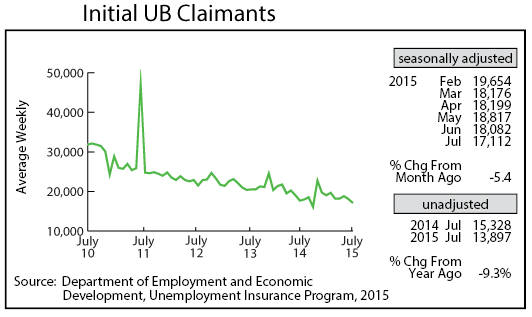by Dave Senf
August 2015
Note: All data except for Minnesota's PMI have been seasonally adjusted. See the feature article in the Minnesota Employment Review, May 2010, for more information on the Minnesota Index.
The Minnesota Index advanced 0.3 percent for the eighth straight month in July despite a drop in wage and salary employment and another uptick in the unemployment rate, which inched up for the third straight month. The index was pushed upward by average weekly manufacturing hours which topped 41 hours for the first time since February and by rising real wage and salary income. The U.S. index climbed 0.2 percent for the fourth month in a row. Minnesota's index has been climbing slightly faster than the U.S. index since February, suggesting that Minnesota's economy has expanded just a notch faster than the U.S. index during the first half of 2015.
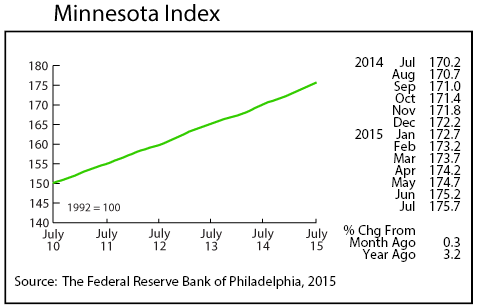
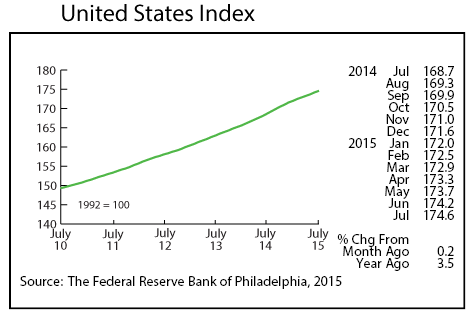
Adjusted Wage and Salary Employment unexpectedly declined in July as employment slipped by 3,900 jobs. All of the job loss was in the private sector as public payroll numbers jumped 2,700. The 6,600 private job cut was the largest since May 2012 and will hopefully be revised lower next month. Leisure and Hospitality layoffs accounted for over half of the private sector payroll reduction with Accommodation and Food Service employment recording its third steepest monthly drop in the last 25 years. Job reduction was also noteworthy in: Educational and Health Services; Trade, Transportation and Utilities; and Construction. The Professional and Business Services sector was the only private industry to increase employment significantly.
Minnesota's unadjusted over-the-year job growth was 1.5 percent in July, just below the 1.6 percent average achieved over the first seven months of 2015. Employment grew by 1.3 percent last year in Minnesota, lagging well behind the 1.9 percent U.S. increase in 2014. U.S. unadjusted employment was up 2.1 percent in July which is just below the 2.2 percent average achieved so far this year. It looks like Minnesota's job growth will again fall short of the national rate but will be higher than last year. Minnesota's low unemployment rate relative to the national rate explains part of Minnesota's slower job growth.
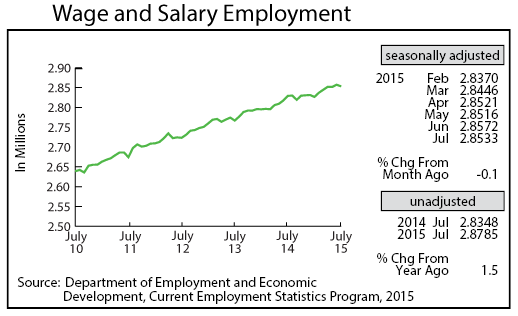
Minnesota's adjusted online Help-Wanted Ads remained virtually unchanged for the third straight month in July. Job advertising online dipped 0.2 percent in the state while increasing 1.6 percent nationally. Minnesota's share of nationwide advertising remains right around 2.5 percent even though its share of national employment is roughly 2.0 percent. This suggests that Minnesota's slower job growth rate is more of a labor supply rather than labor demand problem.

Minnesota's Purchasing Managers' Index (PMI) ticked up for the second straight month in July, advancing to 54.8. Minnesota's PMI index was higher than the U.S. (52.7) and Mid-American (50.6) indices which both lost ground last month. Manufacturing activity in Minnesota will be expanding faster over the next few months than in many other regions according to the July's readings. Another positive sign is last month's 54.5 employment component reading. The index is made up of five components including an employment component. This component, the job gauge, increased to 54.5 in July from 51.8 in June suggesting that manufacturing hires should increase over the next few months.
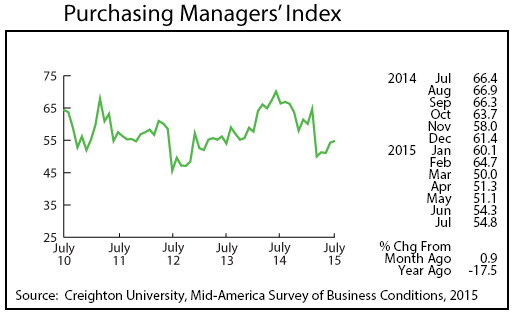
Adjusted Manufacturing Hours climbed sharply for the second time in three months, jumping to 41.0 hours for the first time since February. Factory hours are still down significantly from a year ago but seem to be signaling that manufacturing activity is on the upswing. Manufacturing Earnings inched up in July to $827.91 but were below last year's level for the 11th consecutive month.
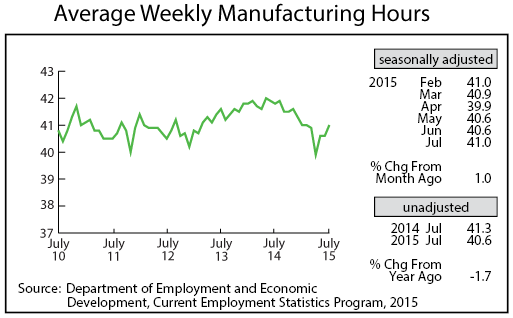
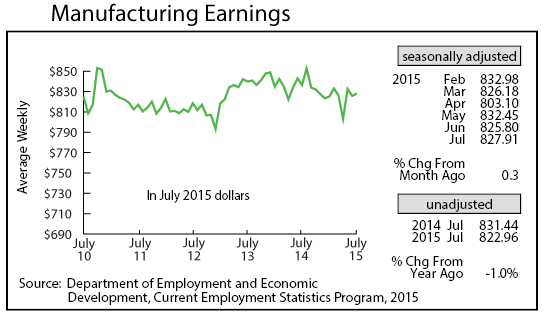
The Minnesota Leading Index zigzagged down in July to 1.75. July's reading predicts that Minnesota's GDP will expand 1.75 percent over the next six month which works out to a robust 3.5 percent annualized rate. Minnesota's leading index has outpaced the U.S. leading index since November suggesting that Minnesota's economy will likely grow faster than the national pace for the rest of 2015.
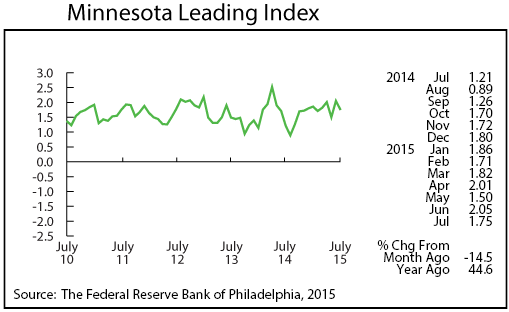
Adjusted Residential Building Permits slipped for the second month in a row to 1,565 but were up 8.5 percent from a year ago on an unadjusted basis. Home building activity is up moderately from last year but remains well below the historical norm.
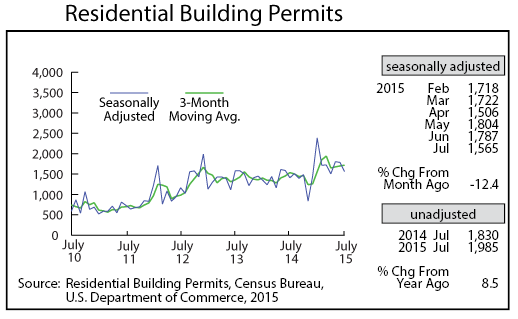
Adjusted Initial Claims for Unemployment Benefits (UB) dipped strongly for the second straight month in July, pushing initial claim numbers down to the second lowest level since they skyrocketed up during the Great Recession. Minnesota's job growth will remain solid, in the 1.5 - 1.7 range, for the rest of the year based on the current low initial claims level.
